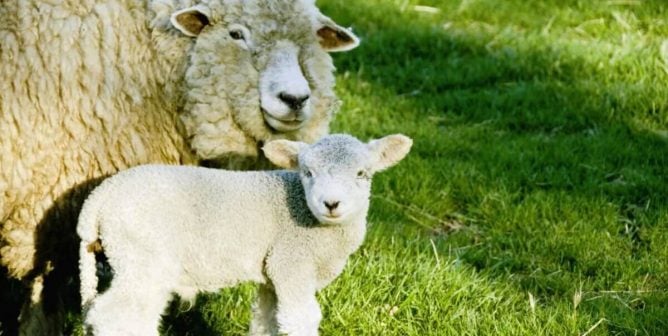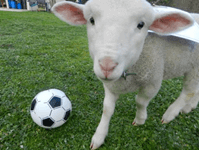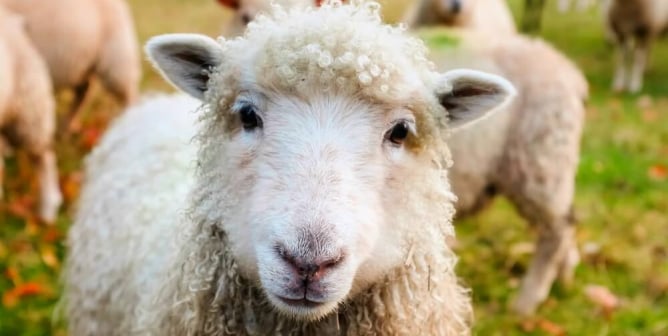Woody: A Survivor’s Story (Grades 3-5, English and Spanish)
This lesson plan is designed to help teachers present animal rights issues to their students. If you’re an educator, please feel free to adapt this material to fit your needs, and contact us if you need help incorporating this activity into your curriculum.
Spanish-language educators: This lesson plan is available here in Spanish.
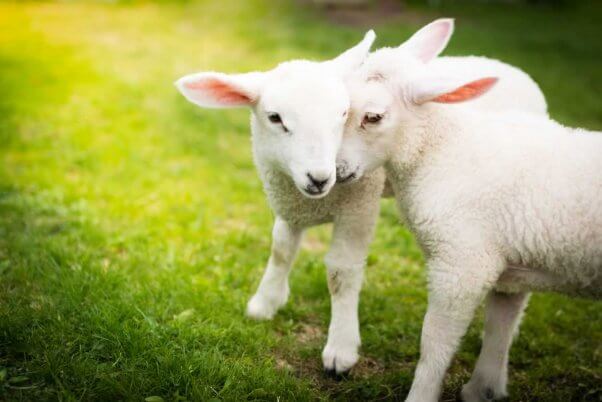
Suggested grade levels: 3–5
Objectives:
- Affective: Students will be able to demonstrate an understanding of sheep as individuals and explain why it’s cruel to buy and wear wool.
- Cognitive: Students will be able to determine the main idea of a text and explain how it’s supported by key details.
Background
Sheep are gentle individuals who, like all animals, are capable of experiencing pain, fear, and loneliness. But because there’s a market for their fleece and skin, the wool industry treats them as nothing more than wool-producing machines.
As in other industries in which animals are raised for profit, the interests of animals used by the wool trade are rarely considered. Flocks usually consist of thousands of sheep, and individual attention to their needs is virtually impossible.
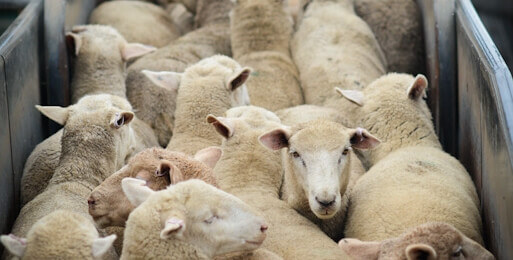
Materials
- “A Sheep’s Life”
- Main idea graphic organizer
- “Meet Woody!” text
- Sweaters, scarves, hats, gloves, coats, or other items made from animal-free fabric
Resources
Key Vocabulary
- ewe: a female sheep
- good Samaritan: a person who helps others, especially strangers, when they’re in trouble
Motivation
Show the students the “A Sheeps Life” sheet, which includes a photo of a sheep who hasn’t been sheared for long time.
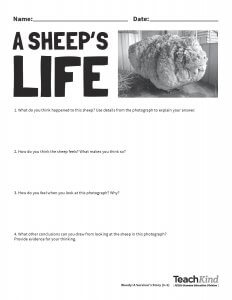
Ask the following critical-thinking questions:
- What do you think happened to this sheep? Use details from the photo to explain your answer.
- How do you think the sheep feels? What makes you think so?
- How do you feel when you look at this photo? Why?
- What other conclusions can you draw from looking at the sheep in this photo? Provide evidence for your thinking.
Tell the students that many people don’t realize that if sheep weren’t genetically manipulated (i.e., because farmers force sheep with thick fleeces to mate, and over time, sheep are born with more and more wool), they’d grow just enough wool to protect themselves from temperature extremes. Their fleece provides them with effective insulation against both cold and heat. Then ask the students some additional questions:
- Why do you think humans have bred sheep who grow so much wool? (They do it for money or because of greed.)
- How does it benefit humans to breed sheep who grow excess amounts of wool? (There’s more wool to sell in order to earn more money.)
- How does it benefit sheep to grow excess amounts of wool? (It doesn’t—it causes them to be dependent on humans to remove the constantly growing wool.) • Is it fair to sheep to make them grow more wool? Explain your answer.
Before Reading
Ask students what they know about determining a text’s main idea (i.e., what a text is mostly about or the central idea that all the details relate to) and key details (important pieces of information that support the main idea). Identifying the main idea helps us recognize the most important information during reading. When we engage with a text in this way, it helps us monitor our understanding of it. We can determine its main idea by looking at what the details have in common.
Model this process using the loyal fish story. Explain how to identify important details from the text and determine which details are related by discussing what they have in common. Demonstrate how to complete a Main idea graphic organizer
Main Idea: Fish can be faithful to each other.
Supporting Details:
1. The fish didn’t leave his trapped friend behind but rather stayed by his side.
2. He remained close even though there was a potential threat.
During Reading
Have the students read the “Meet Woody!” text with a partner and underline important details in the text.
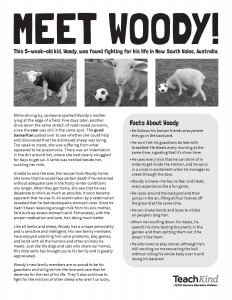
They should determine which details are related and discuss with a partner what these key points have in common. Then, have them complete the Main idea graphic organizer.
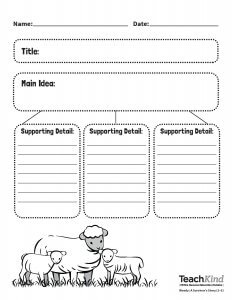
Main idea: Woody survived an ordeal but is now thriving in his new home.
Supporting Details:
1. His mother lay dying next to him.
2. A good Samaritan rescued him.
3. He likes to play games, and he bonds with everyone he meets.
Ask the students the following questions:
- Why do you think Woody and his mother were stranded for days without any care?
- Should there be consequences for people who don’t provide adequate care for animals they’re responsible for? Explain your answer.
- What would have happened to Woody if a good Samaritan hadn’t rescued him?
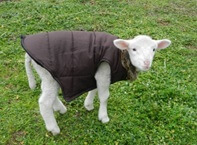
After Reading
Turn and Talk: At the end of the text, it says that Woody’s guardians will continue to fight for the millions of sheep who aren’t as lucky as he was. Being lucky means that you have success purely by chance or accident. In his case, he was found and saved by chance. Many lambs like him are never found and saved.
Ask the students to describe the key details in the text that support the assertion that Woody was one of the lucky ones. Explain that if these events hadn’t happened, Woody wouldn’t have survived. (Someone spotted his mother while driving by. The same person drove past again five days later. That good Samaritan pulled over to see if the sheep needed help. The rescuer took Woody to her home.)
Real World Connection
Show students the wool-free garments that you brought, discuss what they’re made of, and tell them that they can keep people just as warm as items that contain wool can. Let students touch them and try them on. Explain that every day, many sheep like Woody and his mom find themselves in sad situations like this, because people buy wool items and see sheep only as the source of hats, scarves, gloves, or coats (i.e., as objects or things, not living beings).
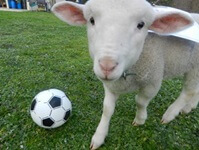
Ask students, “What should people do to make sure that all sheep are as lucky as Woody?” On poster paper, have them draw and caption something that they can do to help sheep.
Wrap-Up
Ask the students to share their posters and discuss what they can do to help sheep like Woody.
Assessment
Evaluate student writing to determine whether it identifies the main idea and supporting details. Evaluate their posters for valid suggestions as to what they can do to help sheep.
Common Misperception
Some people think that wool comes from sheep who are just “getting a haircut.”
Reality
If sheep were left alone and not genetically manipulated by humans, they’d grow just enough wool to protect themselves from temperature extremes. Their fleece provides them with effective insulation against both cold and heat. But in the wool industry, farmers have bred sheep to grow an unnatural amount of wool by forcing individuals with thick fleeces to mate.
Extension
- Visit an accredited farmed-animal sanctuary that cares for sheep. TeachKind cannot vouch for any facility that we’ve not visited ourselves, but this list of accredited sanctuaries is a good reference.
- Hold a fundraiser to enable students to sponsor a sheep at an accredited farmed-animal sanctuary.
- Collect items to donate to an accredited farmed-animal sanctuary that cares for sheep. Choose from the sanctuary’s wish list.
Common Core Standards Addressed
RI.3–5.2: Determine the main idea of a text and explain how it is supported by key details.
SL.3–5.1: Engage effectively in a range of collaborative discussions (one-on-one, in groups, and teacher-led) with diverse partners, building on others’ ideas and expressing their own clearly.
Additional Information
Common Core Standards: © Copyright 2010. National Governors Association Center for Best Practices and Council of Chief State School Officers. All rights reserved.

